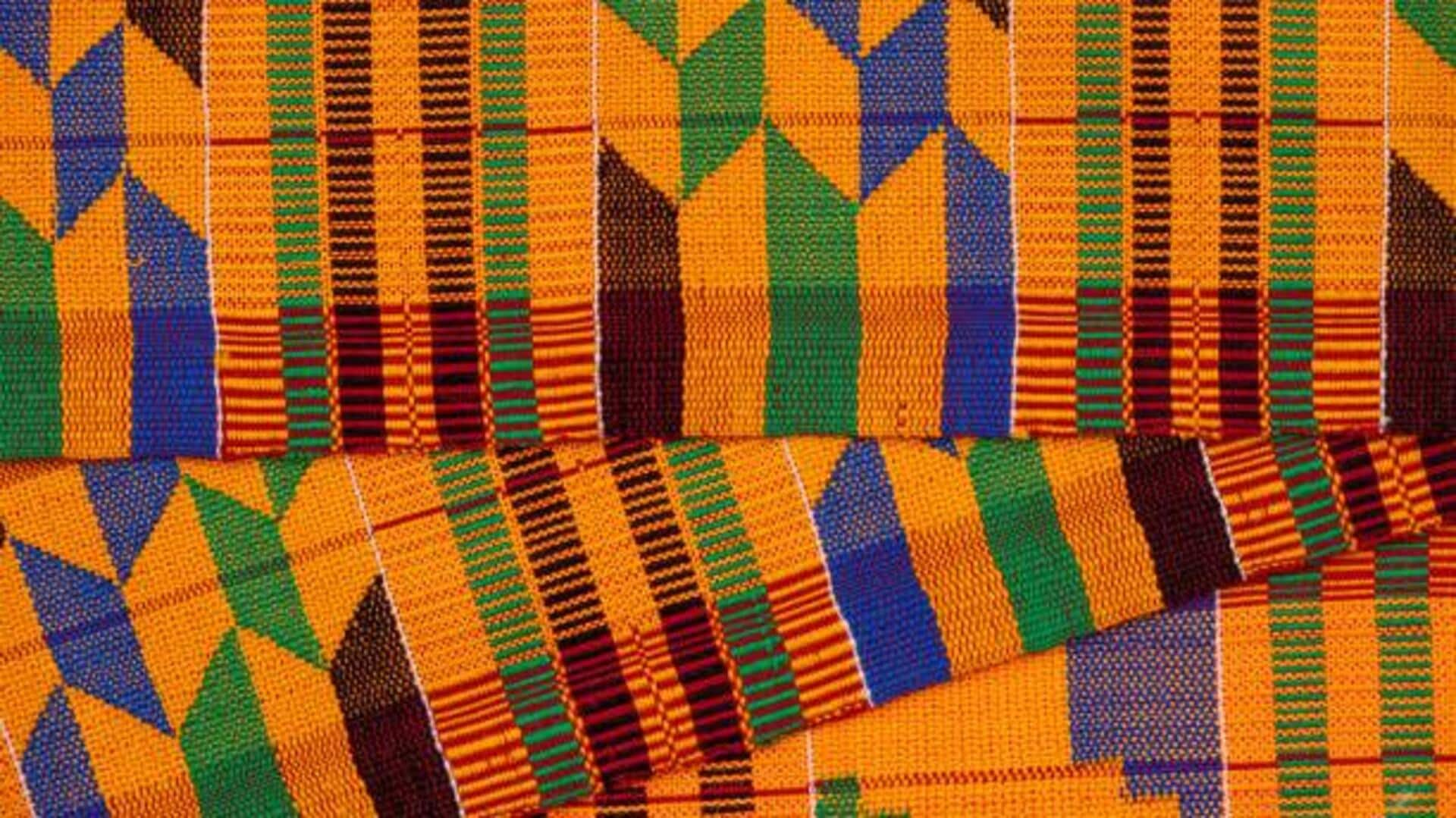
All about kente cloth
What's the story
Kente cloth, a colorful cloth from Ghana, is famous for its complicated geometric patterns and meanings. Each design narrates a story, representing the heritage of the Akan people. The process of weaving it involves complex methods that have been inherited through centuries. Here's a look at geometry and symbolism behind kente cloth's distinctive patterns, and its cultural and artistic significance.
#1
Geometric patterns in kente cloth
Kente cloth includes an array of geometric shapes, including squares, triangles, and diamonds. More than just a design element, these shapes represent important meanings associated with ideas such as unity, strength, and wisdom. The combination of these shapes results in aesthetically pleasing but culturally rich visually stunning designs.
#2
Symbolism in color choices
The colors in kente cloth are selected with great care for the meanings they represent. For example, gold stands for wealth and royalty, while green represents growth and renewal. The combination of colors is selected with thought to tell certain stories or give certain messages in the fabric's design.
#3
Weaving techniques passed down generations
Weaving kente cloth is an art that requires mastery over age-old techniques, handed down through the generations. Craftsmen employ traditional looms to weave complicated patterns with stunning precision. This not only maintains the cultural authenticity of every piece but also opens up room for artistic innovation. The weavers' immense expertise reflects in the intricate designs that pay homage to a rich cultural heritage, while celebrating creativity.
#4
Cultural significance beyond aesthetics
Beyond its visual appeal, kente cloth signifies a lot for the Akan people. It is generally worn on important ceremonies like weddings or festivals to signify status or communicate messages about one's heritage or beliefs. Understanding these aspects makes one appreciate this remarkable textile tradition even more—without the need of any conclusion or summary at the end of this exploration into its geometry and symbolism.